The biggest railway disaster in history — how was it and who is to blame?
Categories: Asia | Catastrophes | Nature
By Pictolic https://pictolic.com/article/the-biggest-railway-disaster-in-history-how-was-it-and-who-is-to-blame.htmlIn the last month of 2004, a large earthquake occurred near Indonesia, due to which a huge tsunami swept the coast of several countries. Scientists claim that more than 200 thousand people became victims of the ocean that day, but we will never know the exact data on the number of deaths. One of the most terrible episodes of this tragedy was the disaster of the Queen of the Sea railway express, en route from the capital of Sri Lanka, Colombo to the resort of Matara.
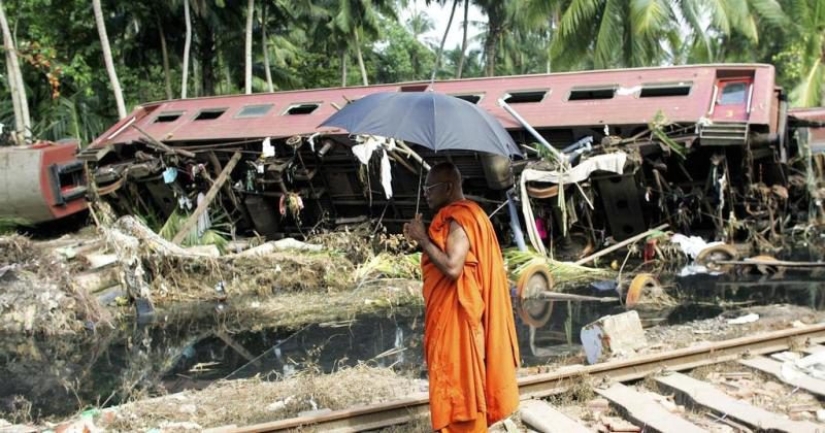
For the express No. 50 with the romantic name Samudra Devi ("Queen of the Coast"), the flight on December 26, 2004 was not quite ordinary. On this day, two of Sri Lanka's favorite holidays coincided - Boxing Day, a British Boxing Day left over from colonial times, and Poya Day— a local celebration dedicated to the full moon.
In this regard, the train was unusually overloaded — all 1,500 tickets were sold out at the Colombo ticket offices, and besides, many owners of popular railway passes in the country were crammed into the cars. As for the "hares" who get hooked on the way at small stations and technical stops, their number cannot be calculated even approximately.
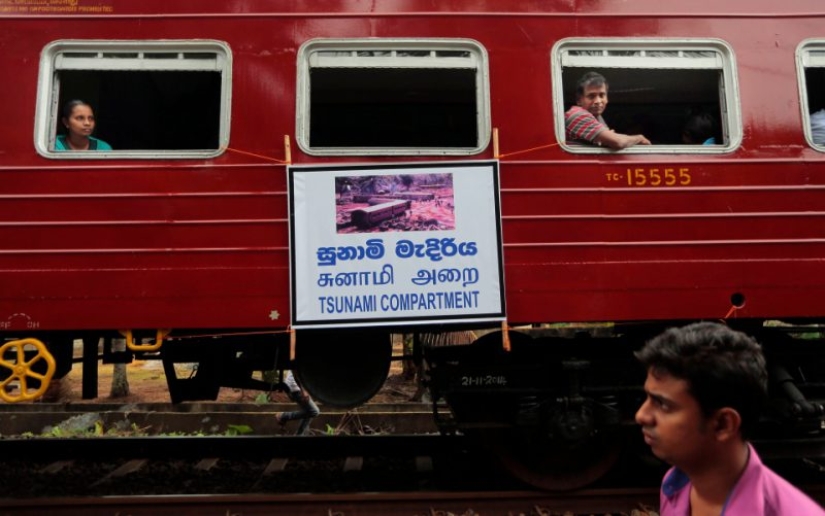
The passenger train was so overloaded that the railway company decided to play it safe and replaced the locomotive usual for the express with the most powerful diesel locomotive M2-591. The train left exactly on schedule at 6.30 am and 3 hours and 45 minutes later was supposed to deliver passengers to the ocean.
Shortly after the "Queen of the Coast" set off, the seismological station in Pallekele recorded a series of powerful tremors with an epicenter near Sumatra. It would seem that it is possible to be safe by notifying the coast of a possible danger, but scientists found an earthquake near the island of Indonesia, remote from Sri Lanka, to be harmless and the alarm was not announced.
Only some time later, when Indonesian radio stations began transmitting distress signals in connection with the tsunami that hit the islands, Pallekele came to their senses and set to work. Precious time was lost and not everyone who was in the tsunami risk zone was warned. Of the 8 trains on the coastal line, only managed to notify 7. There was no connection with the "Queen of the Coast", and the express was just on the most dangerous part of the road.
At 9.30 the train made a stop at the semaphore in the village of Peralia, just 170 meters from the ocean. At that moment, the first wave of the tsunami washed ashore. As often happens, it was quite weak and did not lead to casualties. The passengers of the train were scared, and several cars derailed, making further travel impossible. The train was flooded with water, which rose, in places, to a height of about a meter.
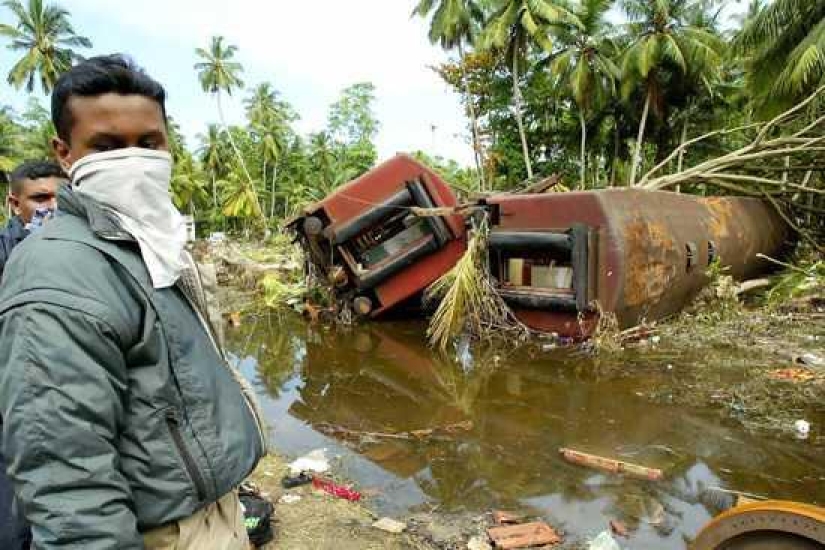
Passengers of the "Queen of the Coast" began to move to the roofs of the cars and drag their luggage there to protect it from water. Also, residents of the village, which was flooded, began to gather near the train. Experienced villagers knew that a second, more powerful wave was possible and it seemed to them that hiding behind the train cars, they would be reliably protected.
Of course, they were wrong. 15 minutes after the first wave, the second came, the height of which reached 7-8 meters. The blow was so strong that there was practically no chance for either passengers or locals hiding behind the cars to escape. Eight packed wagons and a locomotive weighing about 80 tons were picked up like toys and thrown by the elements into the village of Peralia.
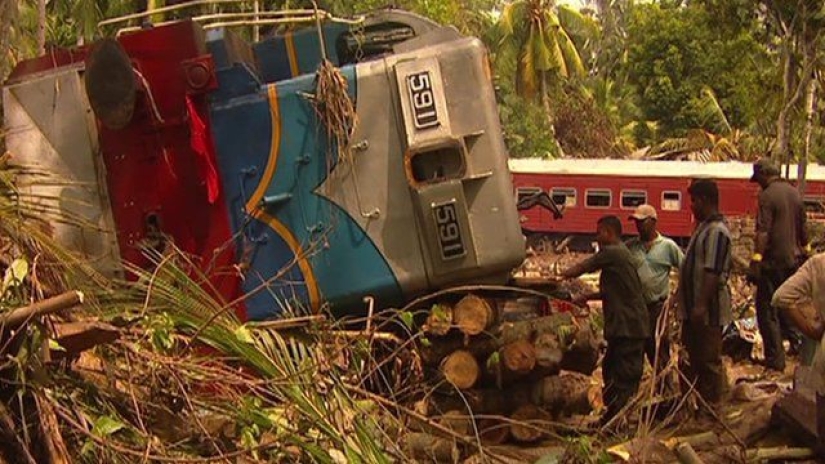
Wagons, broken trees, village fences, boats and longboats, dying people - everything was mixed up in a roaring, sweeping away everything in its path. The mess of debris and bodies was stopped by the houses of the village, some of which were also destroyed by water.
This is how one of the few surviving passengers of the Queen of the Coast, journalist Shent Ravindra, later told about the tragedy. The man did not dare to stay on the roof of the building damaged by the elements and jumped into the water to get to a safe place where he could wait out another tsunami wave if it came.
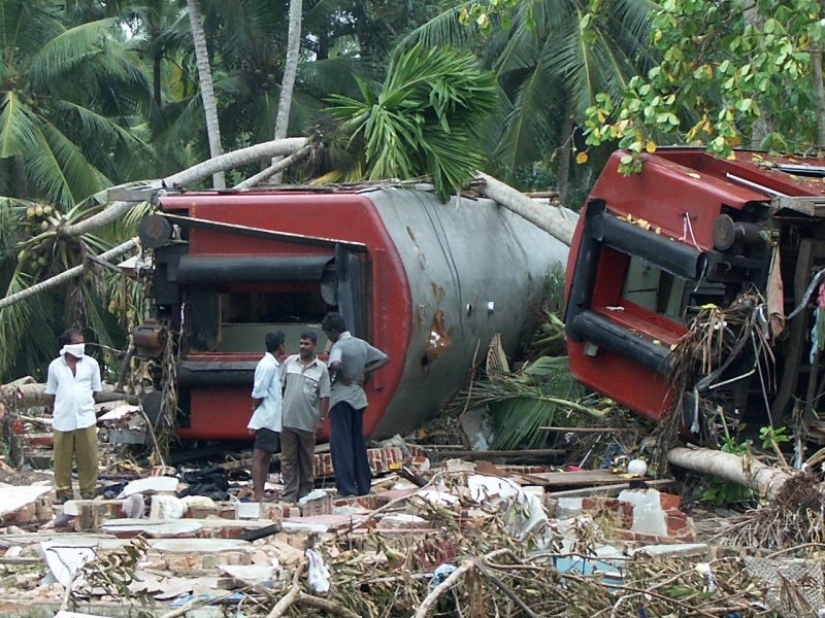
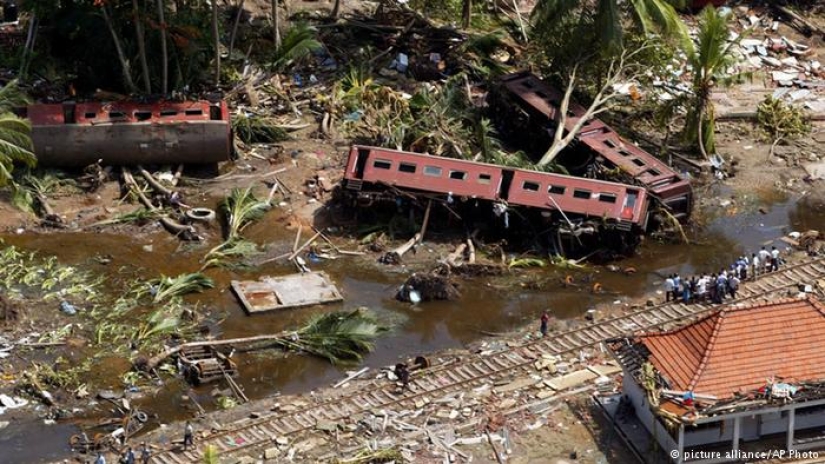
The authorities found that only 150 of the Samudra Devi passengers were lucky enough to survive. It was not possible to determine the exact number of victims, since the number of passengers was unknown, and the ocean, retreating, took some of the bodies with it. According to rough estimates, from 1,700 to 2,000 people from the train died, as well as several hundred villagers.
The majority of the dead drowned or received life-incompatible mechanical injuries. But people continued to die after the elements left. There were many wounded people at the scene of the tragedy who needed emergency medical care and could not receive it. The country's rescue services were caught off guard by a natural cataclysm and could not begin the coordinated actions necessary in such cases to provide assistance and evacuate victims of the disaster.
But even those few rescue teams that turned out to be ready for active action could not act effectively because of the damage caused by the elements to the infrastructure. Most of the highways in the coastal zone were destroyed, and in addition, the tsunami demolished several important bridges over rivers flowing into the ocean.
As a result of the collapse caused by a natural cataclysm, the first helicopter arrived at the place where the "Queen of the Coast" was located only 7 hours after the accident, and the rescue operation was launched even later, when the coast, deprived of electricity, plunged into darkness. In total, the rescue operation took about a week, while it was conducted extremely unprofessionally. As a result, several dozen more victims died, who had a good chance of surviving while receiving qualified and timely assistance.
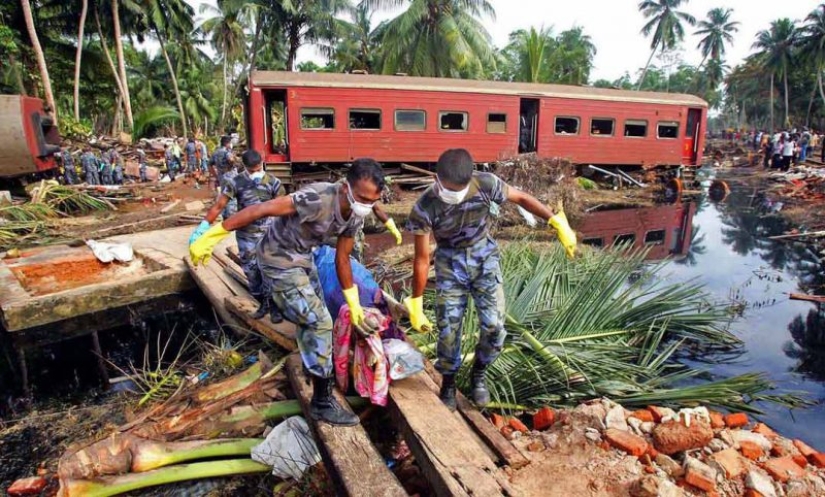
Of the eight express cars, six remained on the shore, which the wave scattered several hundred meters from the railway tracks. Two, along with the passengers, were carried into the ocean. The railway workers managed to restore some of the wagons remaining on land. The M2-591 locomotive was also put back into operation, which again serves the Primorsky line.
The loaded railway line was repaired and modernized, which allowed to increase the intensity of train traffic, as well as their speed. The only flight corresponding to the old schedule of 2004 departs from Colombo on December 26 at 6.30 am.
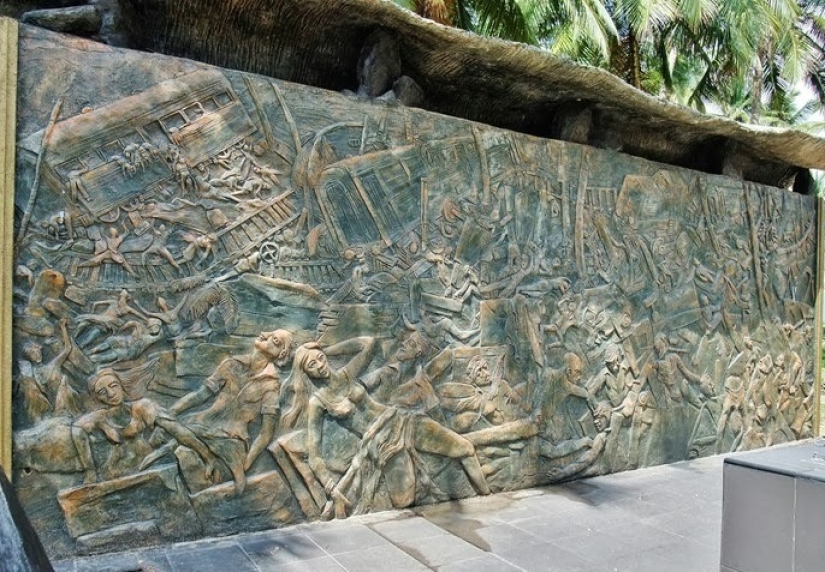
The Samudra Devi express runs at the same speed and makes a mandatory stop in the fishing village of Peralia at exactly 9.30 am. Passengers of the train can get out of the cars and honor the memory of the dead near the monument erected near the railway line. After that, 8 cars of the "Queen of the Coast" go on to the wonderful resorts of the southern coast of Sri Lanka.
Recent articles

A young photographer named Izabella Bedő decided to share simple but very valuable tips on how to take stunning photos of, for ...

It's sad to say, but we're all going to die. Death comes into the life of any person, and often unexpectedly. However, there are ...

Hello, I am a zoo photographer, Mac So. This photo shows a Bornean orangutan father, mother, and offspring. All were taken at the ...